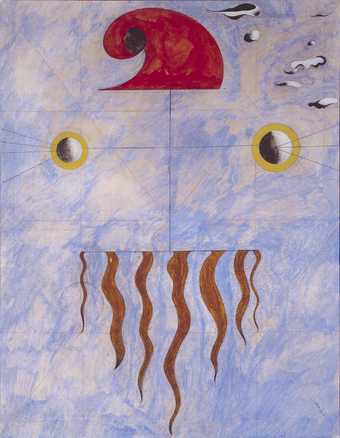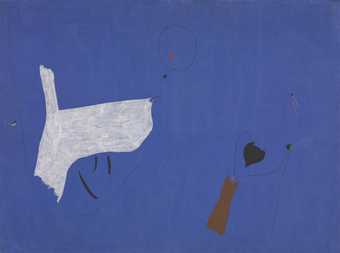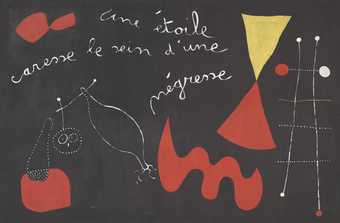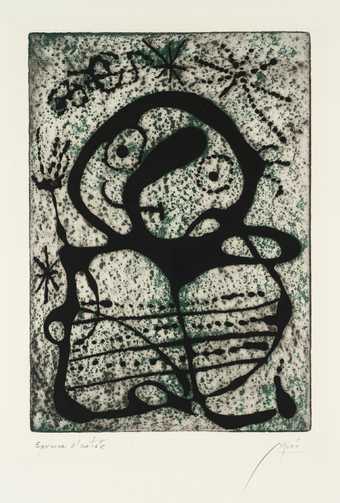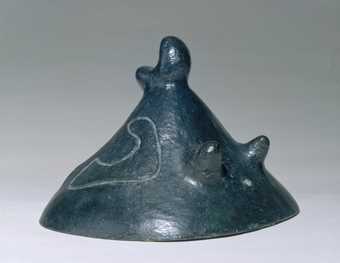MG: I am Matthew Gale. I am one of the curators of the Miró exhibition here at Tate Modern.
MD: I am Marko Daniel. I am one of the curators with Matthew of the exhibition.
MG: So we are here in the first room of the Miró exhibition. One of the things that we’ve been talking about over many years is how these works tell us something about Miró’s relationship with Catalonia.
MD: Yes, particularly the relationship of Miró’s work to the countryside around the farm. The sense that Miró used the area around the farm as a testing ground for ideas is, I think, really interesting. It’s really for me the point also at which we have a very clear sense in which the individual details which he puts onto the canvas are very much held together by a glue of reality. There is a recognisable landscape, a recognisable story. Then very soon afterwards on arrival in Paris that begins to dissolve. We have a similar emphasis on details, but they are really beginning to float.
MG: So there are three parts to the exhibition. The first part deals with Miró’s Catalan roots, and now we are in the middle part, which looks at that critical moment around the civil war.
MD: You could say, well, how is it possible for him to make paintings that seem to have no direct representation or connection to it? But I think the connection is there and is very intense in the way in which the paint is applied: the texture, the brown paint there or the white paint, the different thicknesses, the smearing of this brown paint over it, and then here in particular we can see that the Masonite has been punctured …
MG: There is a real raw physicality in these works.
MD: Yeah.
[Music plays]
Then on the third and final part of the exhibition, which focuses on Miró in the later part of his life and towards the end of the Franco regime. It’s a period, I think, where it becomes clear how, as an established artist with quite a lot of national following at this point, his position in Spain was really quite significant.
MG: Yes.
MD: Perhaps nowhere more so than in this work, The Hope of the Condemned Man.
MG: And a three panel triptych, the fourth of his triptychs.
MD: Miró at this point in his life, as he was old, had this empathy with the young generation; Salvador Puig Antich, a young Catalan anarchist, who had been arrested in a police operation during which a police officer was shot. Salvador Puig Antich took the blame for that. He was condemned to death and Miró really dedicated this work to this young man. Obviously he …
MG: An astonishing thing to do, really. Astonishing both because of that political context but also because it is a sign of physical freedom of activity, the way he is applying the paint, but the language is entirely abstract. Then he gives us this extraordinary title, The Hope of the Condemned Man, something that is like sand running through your fingers. It’s something that is tangible but intangible. What defiance is shown here, a real sense of pushing against mortality through an explosion of activity. That, as you say, provides an example to the younger generation of artists, and an example perhaps to us all.
End of recording


